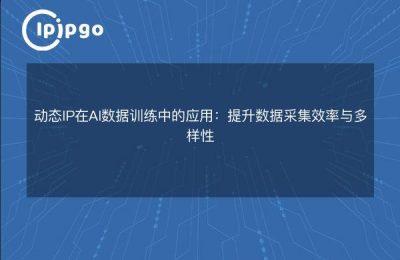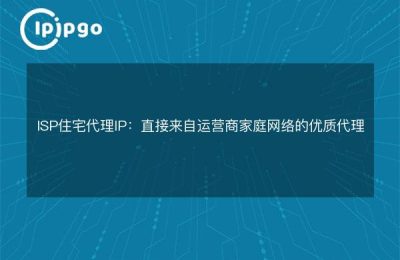
How Proxy IPs Can Be the First Line of Defense for Enterprise Network Security
When the server IP is exposed to the public network, it is like hanging the house key at the door, hackers can easily find the entrance to the attack. Using ipipgo proxy IP service is equivalent to putting a "cloak of invisibility" on the server - business traffic is forwarded through residential IP nodes around the world.Real server IP completely hiddenThis solution is particularly useful for small and medium-sized businesses. This solution is particularly useful for small and medium-sized businesses, where basic protection can be established without the need to purchase expensive hardware.
Three Steps to Building DDoS Protection
Step 1: Traffic Triage Architecture
Through ipipgo's global node pool, access requests are decentralized to proxy servers in different geographic locations. When a DDoS attack occurs, the system automatically directs the attack traffic to multiple "bait nodes". An e-commerce platform test data show that this diversion mechanism can beReduces attack traffic from 80%+ direct to serverThe
Step 2: IP Intelligent Switching System
ipipgo's dynamic residential IP pool supports second switching. When a proxy IP is locked out by an attack, the system immediately enables a new IP to take over the connection. The process is fully automated and user access is not interrupted. Testing by the technical team has shown that in a sustained attack scenario, theAutomatic replacement of 300+ protection IPs per hourThe
Step 3: Traffic Cleaning Strategy
Combined with ipipgo's traffic analysis system, you can set intelligent filtering rules. For example, set "the same IP request more than 50 times per second automatically black", these rules will be synchronized to all the proxy nodes. After a financial customer adopts this program.Abnormal traffic identification accuracy improved to 92%The
Advanced Tips for Hiding Real IPs
Highly anonymous proxy settings
Using ipipgo's HTTPS/SOCKS5 proxy protocol completely hides the X-Forwarded-For header information. In penetration tests, attackers can only see the proxy IP and cannot trace the real server location. Technical validation shows that this approach makesServer IP Exposure Risk Reduction 97%The
Location obfuscation strategy
Create server location fog by randomly calling residential IPs in different countries. For example, forwarding business traffic through proxy nodes in the United States, Germany, and Japan in turn. After a gaming company adopted this solutionDirected Attack Attempt Reduction 65%The
Explanation of the advantages of ipipgo technology solutions
Unlike ordinary proxy services, ipipgo'sResidential IP resource library covering 240+ countries and regionsIt provides a more realistic simulation of the network environment. Support HTTP/HTTPS/SOCKS full protocol access, especially suitable for business scenarios requiring high anonymity. Dynamic IP pool and static IP can be freely combined to meet the protection needs of different business stages.
Frequently Asked Questions QA
Q: Does proxy IP affect the website access speed?
A: ipipgo uses intelligent route optimization technology to accelerate nodes through the backbone network, and the measured latency is 40% lower than the traditional scheme.
Q: Should I choose dynamic or static IP?
A: Dynamic IP is suitable for defense of frequent attack scenarios, static IP is recommended for business systems that require fixed authentication, and both can be switched at any time in the console.
Q: How to verify the IP hiding effect?
A: Visit "whatismyipaddress" and other testing websites to confirm that the IP displayed belongs to the proxy node and not the real server IP.
With the above solutions, enterprises can build a professional-grade protection system at minimal cost. ipipgo provides complete technical documentation and API access guide, and technicians can complete the basic protection deployment within 2 hours. The important thing is to establish a continuous monitoring mechanism, combined with the security logs of the proxy service, to optimize the protection strategy in a timely manner.








